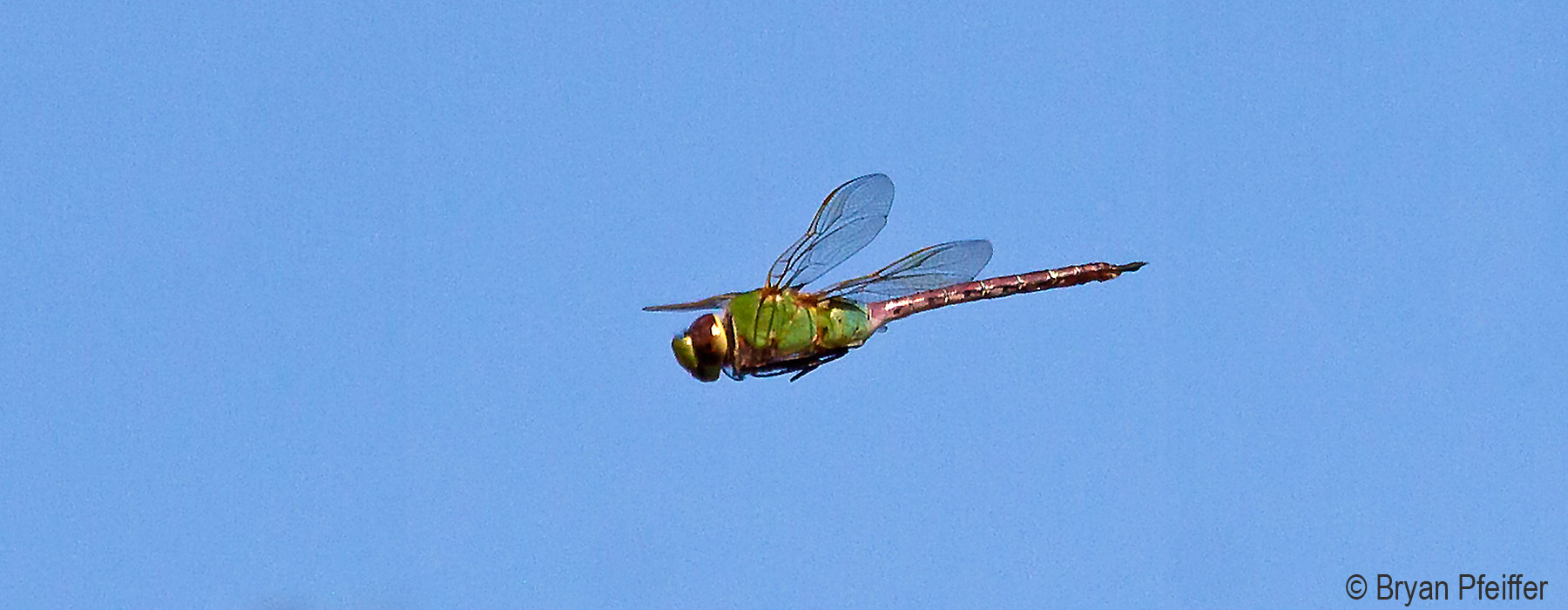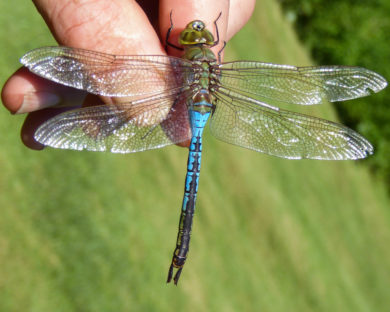Dragonfly migration has been observed on every continent except Antarctica, with some species performing spectacular long-distance mass movements. Like birds, millions of Common Green Darners migrate to the north in the spring and south in the fall.
Our research has found that Common Green Darner spring migration closely follows the average daily temperature of 48° F northward. We are curious if climate change will shift their migration and arrival dates. Join our Northeast Darner Flight Watch and help us beat our predictions! It's easy and fun!
Common Green Darner Migration
Our research on Common Green Darner migration discovered that it takes three generations to complete its annual cycle. One generation migrates north in spring, the second south in fall, and the third remains resident in the southern part of the species’ range over winter.
Unlike most dragonfly species that remain in Vermont as residents overwintering as nymphs (larvae) or eggs under the ice, adult Common Green Darners migrate to the southern United States, Central America, and the Caribbean where they mate and die. The new generation emerges as adults during the winter and create another generation of dragonflies. These adults migrate northward in the spring. Upon reaching their destination, they too lay eggs and then die, giving rise to yet another generation.
Our research has found that Common Green Darner migration closely follows a thermocline of 48 degrees F (9.17 C) in spring. We are curious if climate change will shift Common Green Darner migration and their arrival dates here in the Northeast. Join our Northeast Darner Flight Watch and help us beat our model predictions!








